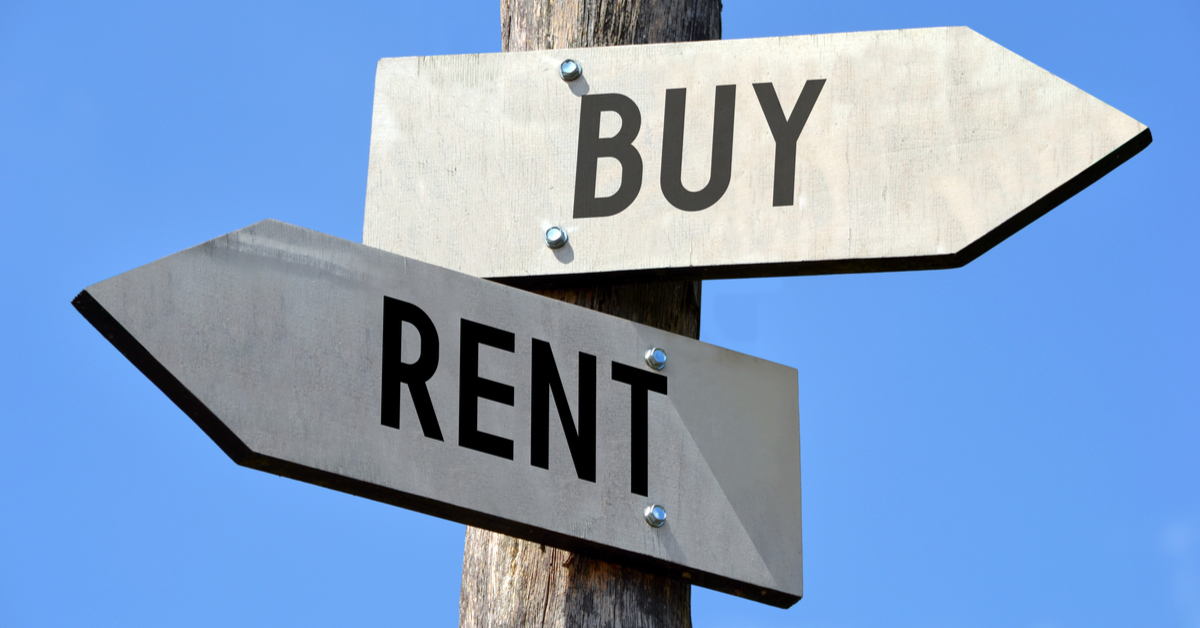Buying is more cost-efficient than renting in a growing number of the largest cities in the country, according to a new study by Realtor.com.
The real estate website’s study found that, even with historically low inventory and burgeoning home prices, the monthly cost of buying a median-priced home was the same or cheaper than the median price of renting a two- to four-bedroom unit in 15 of the nation’s 50 largest markets during January.
That’s up from 13 markets in the same month last year. The list of 15 includes several affordable markets in the South and Midwest, including Cleveland, where the share of income it takes to buy a home is furthest below the share of income it takes to rent. Cleveland’s median list price in January was $198,000; a monthly payment on a Cleveland home in January was about $967 (19% of local income), while January rent in Cleveland was $1,195 (23% of local income).
Other such cities include Pittsburgh (where it took 26% of income to buy vs. 31% to rent); Detroit (28% vs. 25%); St. Louis (20% vs. 21%); and Indianapolis (22% vs. 22%). In addition to favorable buy vs. rent ratios, each of those cities features a January median listing price under $300,000. If you raise that threshold to January’s median listing price of $346,000, the subset grows to include Chicago (26% vs. 31%); New Orleans (31% vs. 35%); Baltimore (21% vs. 23%); Tampa (30% vs. 32%); and Philadelphia (28% vs. 29%).
Want more news, topics and trends?
Get perspectives on the mortgage industry from thought leaders by subscribing to Scotsman Guide’s free digital editions.
Notably, the list also includes a few more expensive markets where rents are simply outpacing home prices. In Riverside, California, for example, the median list price of $485,000 far exceeds the nation’s median, but the monthly cost of buying ($2,224, 37% of local income) remains below that of renting ($2,536, 45%). The same can be said of Miami, with a median list price of $400,000 and a monthly buying cost of $2,092, but rents at $2,350.
Additionally, nine other markets in the country were within 5% of flipping in favor of buying, including Atlanta, Orlando, Phoenix, Memphis, Las Vegas, Milwaukee and Washington, D.C.
“There isn’t a one-size-fits-all answer to the question of whether it makes more sense to buy than rent. However, this is encouraging news for the millions of millennials who are approaching peak homebuying age and may be considering shopping for a home this spring,” said Danielle Hale, chief economist for Realtor.com. “With interest rates expected to rise over the coming months, buyers may need to act sooner rather than later to take advantage of today’s affordability or be prepared to adjust their target purchase price.”
Renting does remain cheaper than buying in several of the country’s big tech hubs, which have seen a large number of residents — including many renters — leave in search of less density, larger spaces and more affordable housing during the pandemic. Increased work-from-home flexibilities from employers have only accelerated the trend, causing rents in many expensive cities to plummet, further widening the gap between renting and buying. Those cities include San Jose (where renting takes 28% of incomes vs. buying at 49%); Austin (23% vs. 35%); Seattle (26% vs. 37%); San Francisco (33% vs. 47%); Los Angeles (52% vs. 73%); San Diego (37% vs. 53%); and Portland, Oregon (24% vs. 34%). It’s worth noting that rents have recently begun to normalize in several of these cities, so it’s possible that the rent vs. buy gap may start to shrink in some of them during the months ahead.






